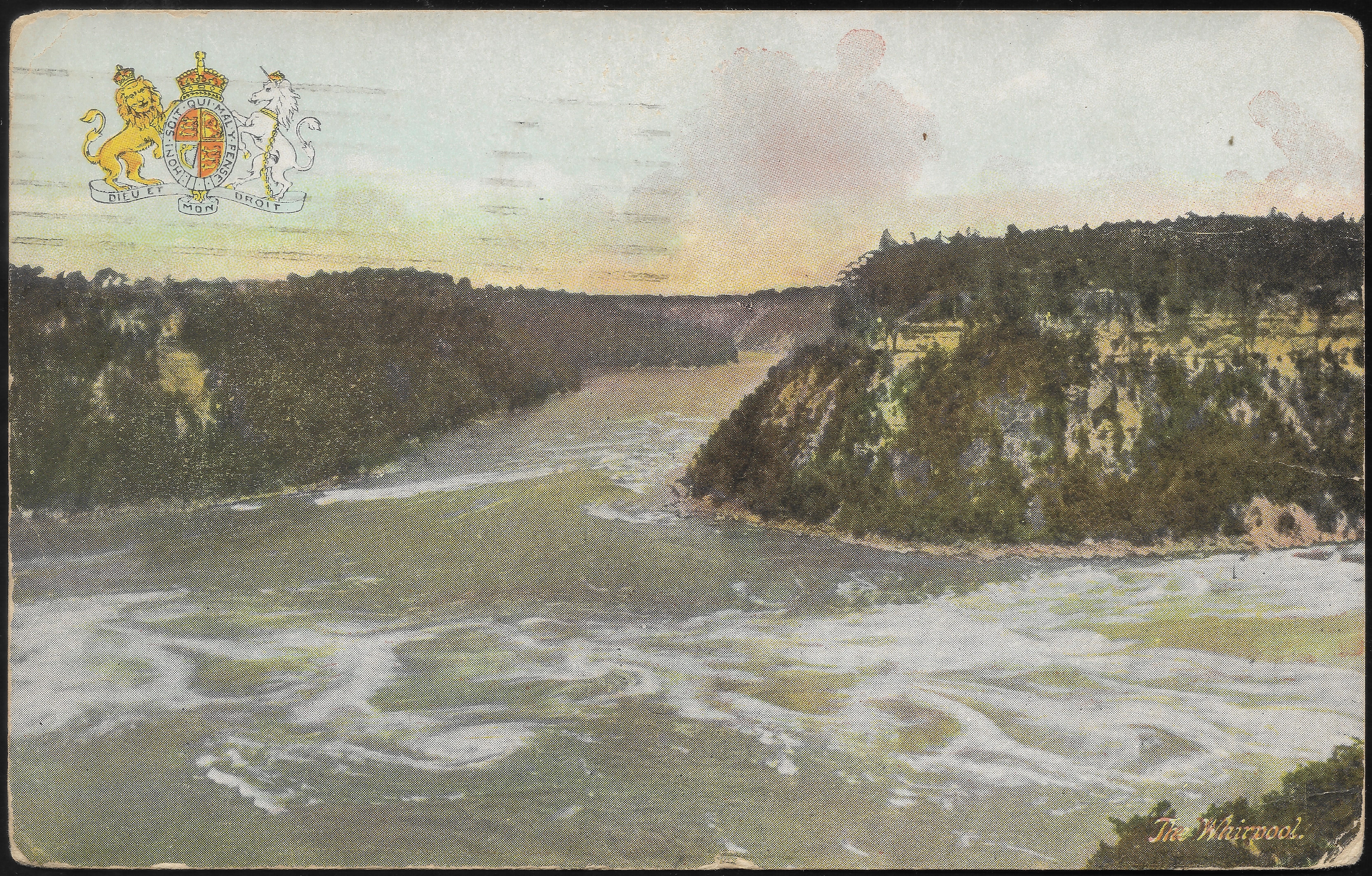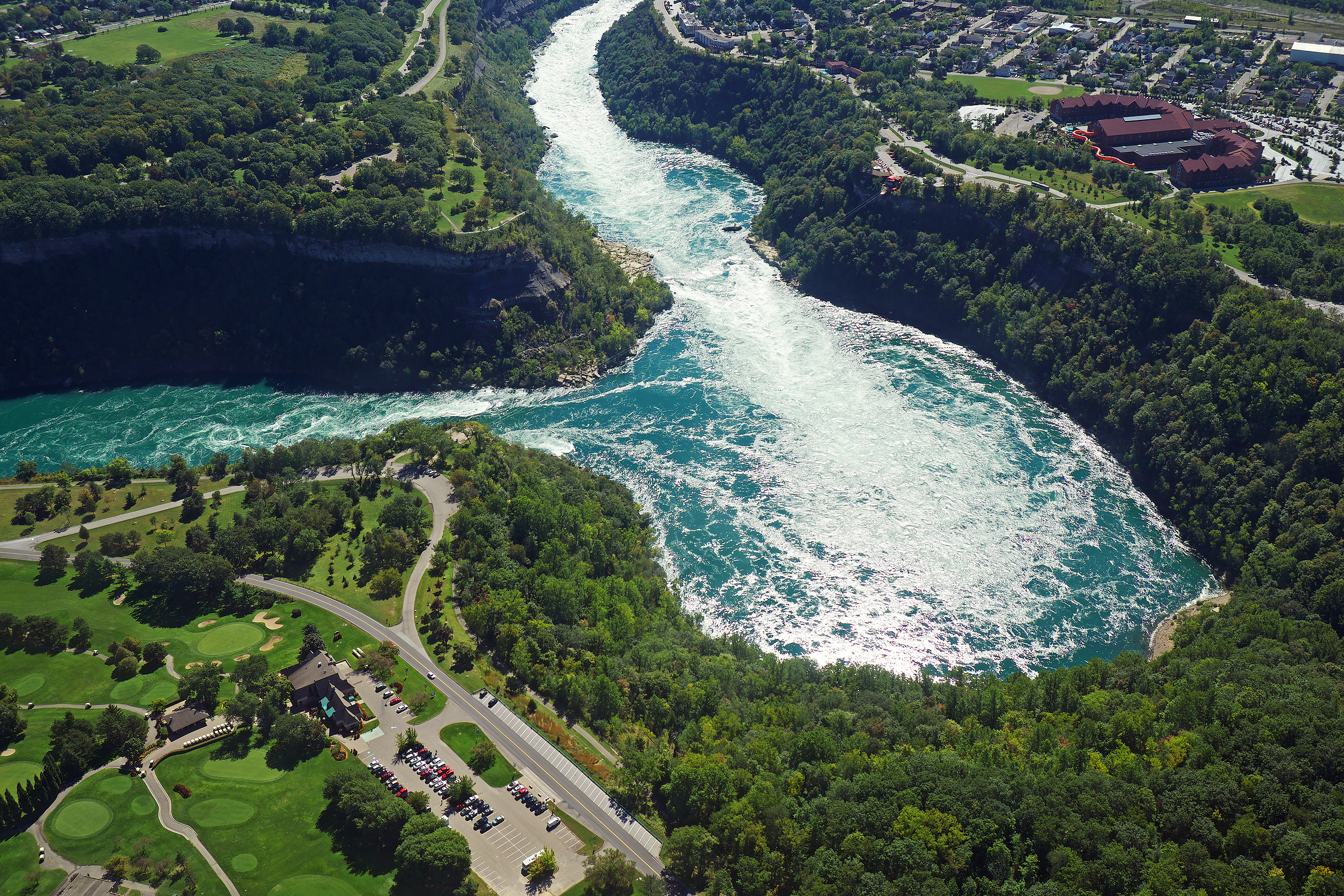

The Niagara Whirlpool is a natural whirlpool within the Niagara River located along the Canada–U.S. border between New York and Ontario. It is in the Niagara Gorge, downstream from Niagara Falls. Its greatest depth is 125 feet (38 m).
It is estimated that the whirlpool formed approximately 4,200 years ago by the upstream erosion of the Niagara Escarpment by the Niagara River. Niagara Falls is located along the boundary of the Niagara Escarpment and has been retreating upstream since its formation. During this normally slow process, the retreating falls intersected with an ancient pre-glacial river bed inside Saint David’s Buried Gorge. During the retreat of ice from the Wisconsin glaciation of the Last Glacial Period, the gorge was filled with loose sediment and rock. When the falls intersected with this buried gorge, the river quickly washed away the filled-in silt and rocks. The ancient buried gorge was nearly perpendicular to the Niagara River. This sharp and sudden change in direction of water flow, coupled with the rapid flow of water exiting the Niagara Gorge (speeds as high as 30 feet per second [9 m·s−1]), resulted in turbulent swirling of the river. Further erosion of the harder rock has resulted in a rounded basin that extends just to the side of the actual river’s course.


The whirlpool naturally spins in a counterclockwise motion during normal flow. When more water from the river is diverted to the surrounding hydroelectric power plants, however, the whirlpool direction often reverses.
There are two state/provincial parks located alongside the whirlpool. On the U.S. side is Whirlpool State Park. A single stone stairway, in dreadful condition, leads 300 feet down into the Niagara Gorge. An old rail-bed, that seems dangerously close to the rapids, now serves as a trail that connects the Devil’s Hole steps to Whirlpool State Park to the south. During the renaissance of Niagara tourism in the 1920’s, passengers would brave the dangers of the rockslides and deadly water as they paid less than a dollar to ride this close on a steel trolley. Not only did rockslides kill passengers and some crew on this line, but the resulting damage led to its demise.

On the Canadian side is Niagara Glen Nature Reserve. It features more Whirlpool-adjacent shoreline, as well as much better maintained facilities, including an elevator that takes visitors down to the “white Water Walk” boardwalk along the upper rapids. The Canadian side also features the Spanish Aero Car, operating since 1916, which takes passengers 250 feet (76 m) above the Whirlpool, from one side and back along its 6 inch-thick steel cables. It traverses the river above the whirlpool, travels between two points on the Canadian side, and briefly enters U.S. territory four times during the trip.


